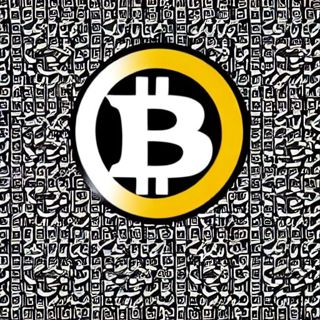
In a world dominated by financial innovations and technological advancements, Bitcoin has emerged as a buzzword that often raises more questions than answers. Many people have heard of it, but few truly understand what Bitcoin is and why it's significant. In this guide, we aim to demystify Bitcoin for laypeople, providing a professional and straightforward explanation of this revolutionary digital currency.
Chapter 1: The Genesis of Bitcoin
Bitcoin, often referred to as "digital gold," was introduced by an anonymous person or group of people using the pseudonym Satoshi Nakamoto in a whitepaper published in October 2008. The primary motivation behind Bitcoin's creation was to address a fundamental flaw in traditional financial systems - the reliance on trusted intermediaries like banks and governments.
Chapter 2: Decentralization and the Blockchain
At the heart of Bitcoin's innovation is the concept of decentralization. Unlike traditional currencies issued and regulated by central authorities, Bitcoin operates on a decentralized network of computers. This network is called the blockchain, a public ledger that records all Bitcoin transactions.
The blockchain is a chain of blocks, each containing a set of transactions. It is maintained by a global network of computers (nodes) that work collaboratively to validate and record transactions. This decentralized nature ensures that no single entity has control over Bitcoin, making it resistant to censorship and manipulation.
Chapter 3: How Bitcoin Works
Bitcoin transactions are facilitated through a technology called "cryptocurrency." Each Bitcoin owner has a digital wallet that stores their private and public keys. The private key is a secret code that allows the owner to access and transfer their Bitcoin, while the public key serves as their unique address on the blockchain.
When a Bitcoin transaction occurs, it is verified by network nodes and added to a block. Miners, individuals or groups of people with specialized hardware, compete to solve complex mathematical puzzles to add a new block to the blockchain. The first miner to solve the puzzle earns a reward in Bitcoin and gets to add the block. This process, known as proof-of-work, ensures the security and integrity of the Bitcoin network.
Chapter 4: Scarcity and Digital Gold
One of Bitcoin's most intriguing features is its scarcity. Unlike traditional fiat currencies that can be printed in unlimited quantities, Bitcoin has a limited supply. There will only ever be 21 million Bitcoins in existence, a characteristic that mirrors precious metals like gold. This scarcity has led to Bitcoin being referred to as "digital gold."
The scarcity of Bitcoin is maintained through a process called "halving." Approximately every four years, the reward that miners receive for adding a new block to the blockchain is cut in half. This halving event reduces the rate at which new Bitcoins are created, ensuring that the 21 million cap is reached gradually.
Chapter 5: Investment and Speculation
Bitcoin has evolved beyond its original vision as a peer-to-peer electronic cash system. It has become a popular investment asset and a subject of intense speculation. Many individuals and institutions view Bitcoin as a hedge against inflation and economic instability. Its price has experienced significant volatility, attracting both seasoned investors and newcomers seeking quick profits.
Chapter 6: Risks and Challenges
While Bitcoin offers numerous advantages, it is not without its risks and challenges. Price volatility, regulatory uncertainty, and security concerns are some of the issues that investors and users must navigate. Additionally, the environmental impact of Bitcoin mining has raised concerns due to its energy-intensive proof-of-work mechanism.
Conclusion
In conclusion, Bitcoin is a groundbreaking digital currency that has the potential to reshape the world of finance. It operates on a decentralized network, uses blockchain technology to secure transactions, and is often referred to as "digital gold" due to its scarcity. However, it also comes with risks and challenges that individuals and investors should be aware of.
Understanding Bitcoin is essential in today's increasingly digital and interconnected world.
While this guide provides a professional and layperson-friendly explanation, it's important to continue learning about Bitcoin and cryptocurrency to make informed decisions and stay up-to-date with this evolving technology. Bitcoin represents a significant step toward financial sovereignty and the democratization of money, and its impact on the global economy is likely to continue growing in the years to come.
Gabriel Nainggolanさんをフォローして最新の投稿をチェックしよう!
0 件のコメント
この投稿にコメントしよう!
この投稿にはまだコメントがありません。
ぜひあなたの声を聞かせてください。
